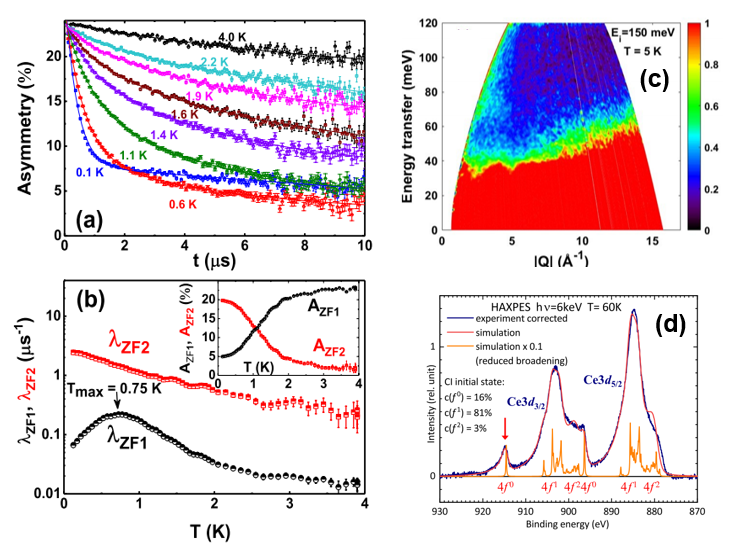The charge of the cerium (Ce) ions in CeIrSn averages as being in between the +3 and +4 states. This intermediate valence behaviour leads to complex magnetic properties. If the mean valence was closer to +3, the partly filled f-orbitals would behave as localised magnetic moments. In CeIrSn, however, they interact with the electrons in the conduction band causing heavy fermion behaviour.
Usually, when valence fluctuating behaviour is observed, the volume of the material increases with temperature. However, this study, published in Physical Review Letters, finds that, for CeIrSn at very low temperatures, the opposite is true.
Using inelastic neutron scattering on Merlin and X-ray photoelectron spectroscopy on the P22 beamline at PETRA-III, the researchers found that the material is deep inside the valence fluctuating region and exhibits negative thermal expansion behaviour below 2 K. Further, muon spin rotation and magnetostriction reveal unusual behaviour, the presence of low temperature anti-ferromagnetic correlations.
To investigate whether this was the case, the group carried out muon spin relaxation measurements on EMU. These measurements supported their interpretation and provided microscopic evidence for antiferromagnetic correlations developing at temperatures well below the Kondo temperature.
By comparing their results for CeIrSn with the isostructural CeRhSn, the researchers suggest that this particularly unusual magnetic behaviour is due to geometrical frustration within the Kagome lattice of the materials' structure.
This work will generate great interest in condensed matter physics, both experimentally and theoretically, as the coexistence of these two contrasting degrees of freedom of 4f-electrons has previously not been observed.
Further information
The full paper can be found online at DOI: 10.1103/PhysRevLett.126.217202

(a)
Zero field µSR spectra at various temperatures, (b) Temperature dependence of
the slow and the fast relaxations and inset shows the initial asymmetries. (c)
Inelastic neutron response revealing the broad magnetic scattering above 60 meV
at low-Q. (d) Ce 3d core-level spectrum from hard x-ray photoelectron
spectroscopy (HAXPES). The red and orange curves shows theoretical simulations.
